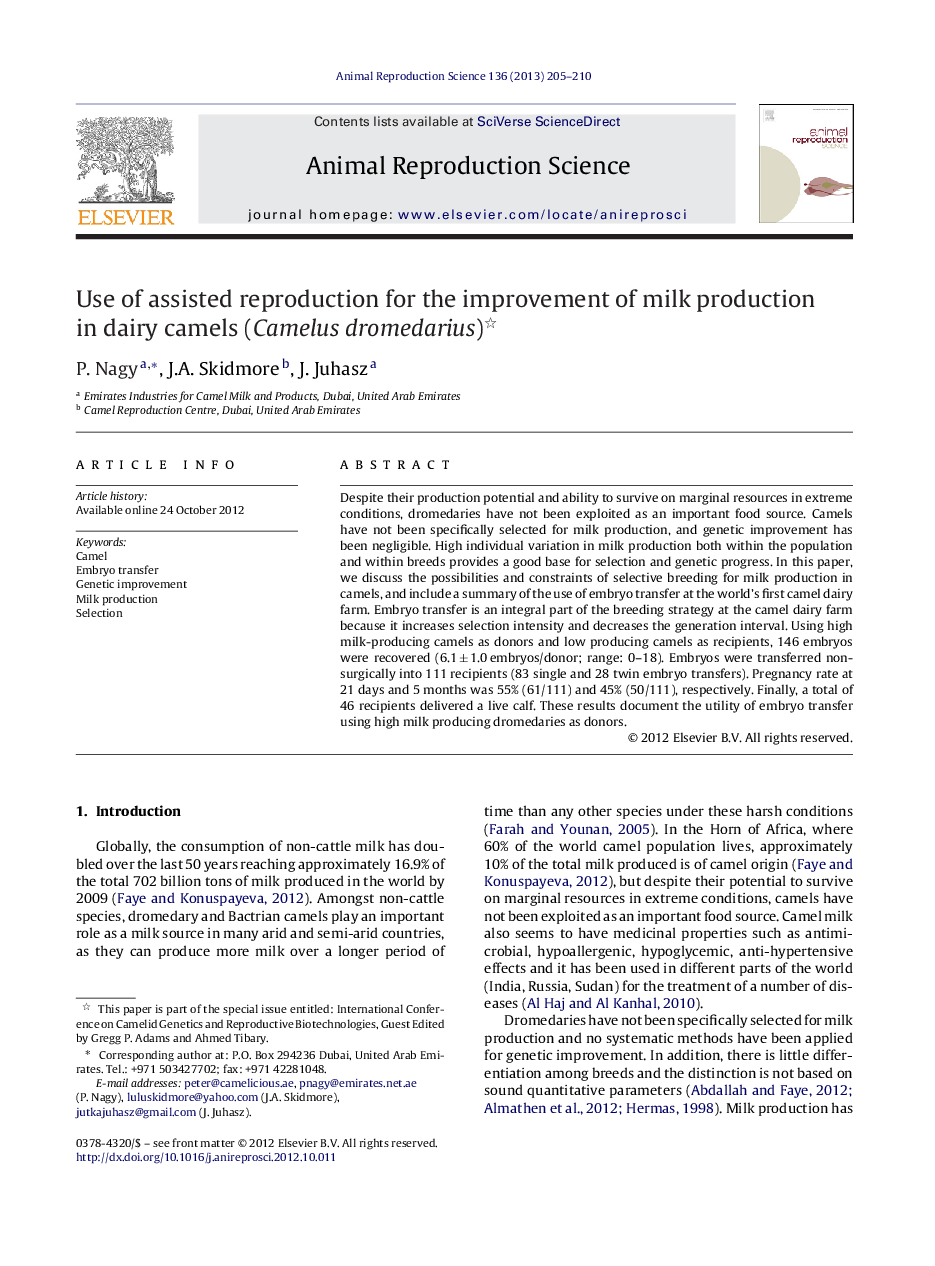| Article ID | Journal | Published Year | Pages | File Type |
|---|---|---|---|---|
| 2073167 | Animal Reproduction Science | 2013 | 6 Pages |
Despite their production potential and ability to survive on marginal resources in extreme conditions, dromedaries have not been exploited as an important food source. Camels have not been specifically selected for milk production, and genetic improvement has been negligible. High individual variation in milk production both within the population and within breeds provides a good base for selection and genetic progress. In this paper, we discuss the possibilities and constraints of selective breeding for milk production in camels, and include a summary of the use of embryo transfer at the world's first camel dairy farm. Embryo transfer is an integral part of the breeding strategy at the camel dairy farm because it increases selection intensity and decreases the generation interval. Using high milk-producing camels as donors and low producing camels as recipients, 146 embryos were recovered (6.1 ± 1.0 embryos/donor; range: 0–18). Embryos were transferred non-surgically into 111 recipients (83 single and 28 twin embryo transfers). Pregnancy rate at 21 days and 5 months was 55% (61/111) and 45% (50/111), respectively. Finally, a total of 46 recipients delivered a live calf. These results document the utility of embryo transfer using high milk producing dromedaries as donors.
